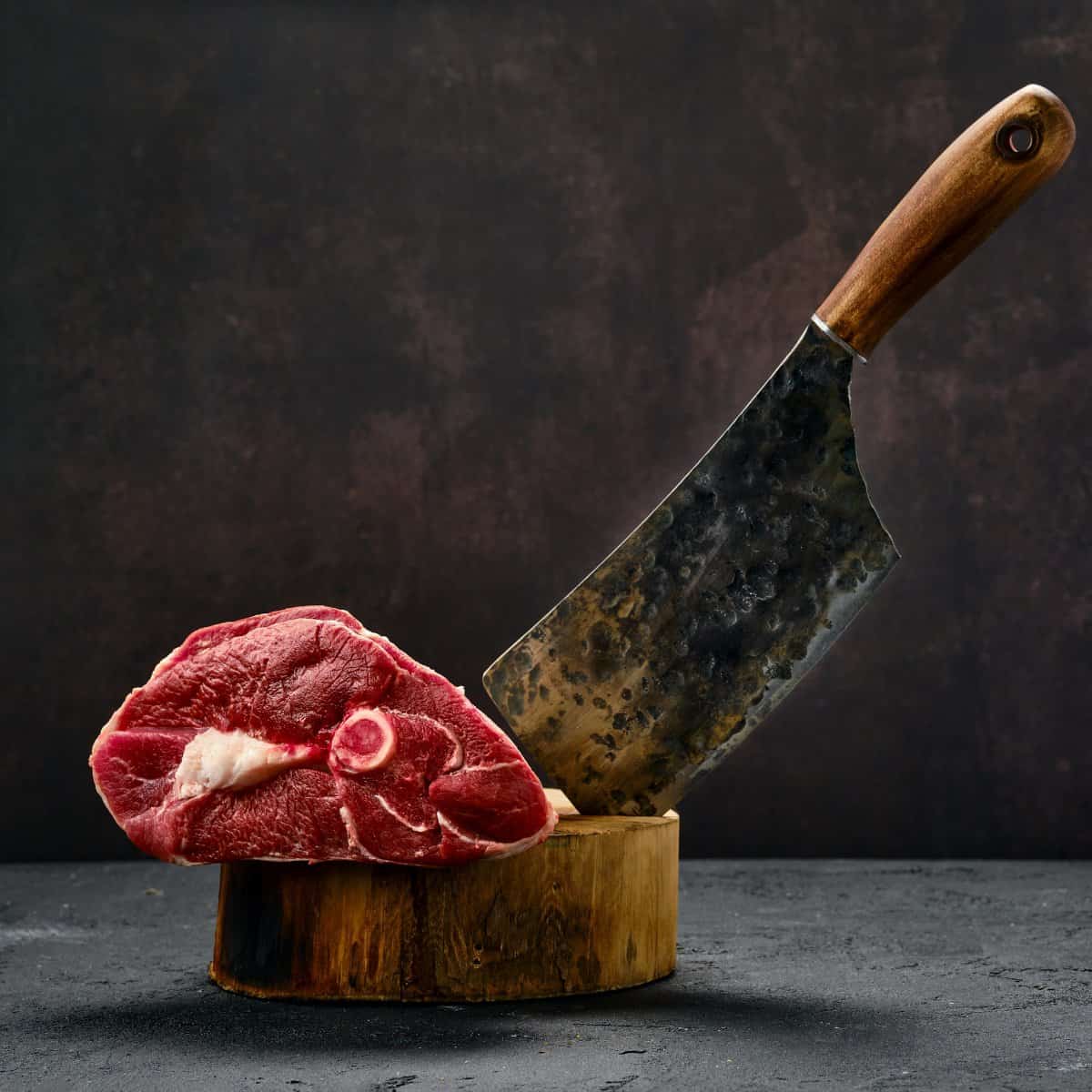Chukabocho: The Chinese Meat Cleaver In Japan
The Chukabocho is a traditional Chinese cleaver known for its finesse. But, it is popular in Japan too because it’s a versatile and all-purpose cleaver with a wide blade.
Chuka means Chinese and bocho means knife.
The whole blade can be used for food prep and cutting meat, fruit, vegetables, and even herbs.
In fact, the chukabocho is the best meat cleaver for quartering, chopping, and cutting poultry, pork, and beef.

But, the Japanese cleaver is not meant to cut through bone or prep bone-in meats, as it’s not quite as powerful as a large meat cleaver.
When used to cut bone, a chukabocho’s fine edge may chip or break.
However, with this meat cleaver, you’re sure to make razor-sharp and precise cuts. You can even hack off large pieces of meat with a good meat cleaver, thus if you’re a meat lover, you need the chukabocho knife in your kitchen.
But, don’t forget that this cleaver cuts up anything so it can replace a whole lot of other Western or Japanese knives.
Also read my Guide to Sukiyaki steak: recipe, cutting technique and flavors

Check out our new cookbook
Bitemybun's family recipes with complete meal planner and recipe guide.
Try it out for free with Kindle Unlimited:
Read for freeIn this post we'll cover:
Japanese chukbocho FAQs
What is a cleaver called in Japanese?
Even though the Chukabocho is a Chinese cleaver, the same name is used in Japan. Thus, a meat cleaver is called chukabocho in Japanese.
Why do Japanese chefs use cleavers?
The thing about cleavers is that they are not balanced like other kitchen knives. A cleaver is a chunky cutting tool but it’s easy and convenient to use.
Some chefs claim that there’s a huge satisfaction when using a cleaver to chop, cut, slice, and dice meat and vegetables because it’s fast and easy.
But an added benefit is that you can scoop up the food directly from the cutting board with the edge of your cleaver’s blade.
Also, nothing quite compares to the power of a cleaver when you want to split beef short ribs, for beef pochero for example. It’s also safer than trying to do it with another type of knife.
How do you wash and care for a chukabocho?
Most chukabocho are made of very strong stainless steel and they are resistant to the wear and tear of cooking and meal prep. A chukabocho is designed to last a lifetime and with a bit of care, it definitely can.
The best way to clean the cleaver is to handwash it. Avoid putting it in the dishwasher as this ruins the handle and the blade.
Exposure to lots of water causes the blade to rust prematurely. Thus, after handwashing, make sure to dry the cleaver with a paper towel or cloth immediately.
Occasionally, the cleaver requires sharpening and I recommend going to a specialist but you can do an OK job with a whetstone too.
Here’s a video explaining the process clearly:
Is chukabocho a meat cleaver?
The answer is yes and no. It’s not a specific meat cleaver that cuts through bone. This one is only for cutting through boneless meat.
Also, the Chinese cleaver has a thinner and sharper edge than the thick and duller blade of the classic meat cleaver.
The chukabocho is also used for cutting and slicing vegetables, fruit, bread, herbs, and spices – things you don’t do with a meat cleaver.
It kind of replaces the chef’s knife but it’s more durable made of the highest-quality carbon steel. So, you can chop almost anything as long as it’s not bones.
Check out our new cookbook
Bitemybun's family recipes with complete meal planner and recipe guide.
Try it out for free with Kindle Unlimited:
Read for freeJoost Nusselder, the founder of Bite My Bun is a content marketer, dad and loves trying out new food with Japanese food at the heart of his passion, and together with his team he's been creating in-depth blog articles since 2016 to help loyal readers with recipes and cooking tips.

